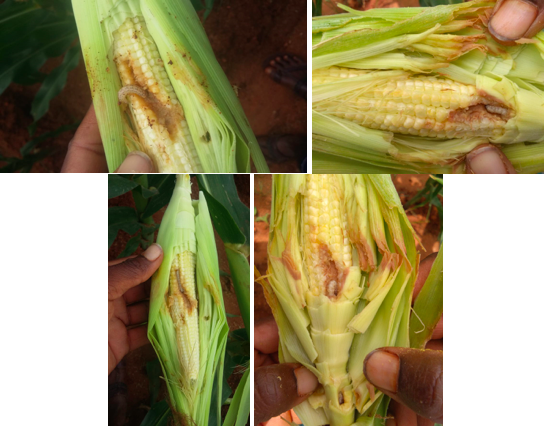
[The study was co-authored by Dr. Shravani Basu, Ángel de Jaén Gotarredona, Dr. Sébastien Foucaud & Dr. Mukti Sadhan Basu for SBSF Consultancy and originally published on towardsdatascience.com. The full study shall be published in a series of articles and this is the first article of that series.]
Goals of the study
Although existing and known for decades in its native tropical and subtropical Americas, Fall Armyworm (Spodoptera frugiperda; FAW) has not really been studied in depth before it started spreading across Africa and the rest of the world. As a result, very limited information is available from the outbreaks of this pest, which is fast becoming ineradicable across continents. The only way then to mitigate the monumental losses left in the wake of its infestation is to understand the pest in great details and develop multi-pronged crop protection and pest control strategies.
This study attempts to shed light on the conditions favoring the spread of FAWs by combining three different datasets bringing complementary information on potential outbreaks of FAW.
Due to the limitations of the data collection method used by FAO, the combined dataset does not allow to build a forecasting model. This study, therefore, focuses on extracting features which are driving the spread of FAW in Africa, where most of the data has been collected.
Although based on the Africa dataset, we have conducted the analysis in such a way that the findings can be extended to any FAW incidences globally.
Fall Armyworms: a global threat
The larval stage of FAW moth is a pest that feeds on more than 350 plant species, causing extensive damage to economically important cultivated cereals such as maize, rice, sorghum; cash crops like cotton, sugarcane, peanuts; fruit crops like apples and oranges, and vegetable crops, among others. Maize however remains the preferred host. Because the caterpillar eats so much of the plant, they are very detrimental to crop survival and yield.
According to the FAO, as much as 18 million tonnes of maize are lost annually in Africa, enough to feed tens of millions of people for whom it is a staple crop and representing an economic loss of up to $4.6 billion in the continent. In addition, country specific studies have shown a positive correlation between FAW exposure and intensity of insecticide use. Several measures to control FAW infestation exist and yet do not significantly reduce the losses.
The outbreak of FAW was detected in Africa in 2016 and has since spread to Asia including the Middle East, and Oceania. A rapid breeder that reproduces at a rate of several generations per year, with a diverse diet, the insect can survive harsh conditions by migrating to different places (across continents) or go into hiding to spring back when conditions are more favourable. The moth can fly up to 100 km per night. The female moth can migrate as much as 500 km before oviposition. However, the insects are not resilient to low temperatures. They cannot migrate and breed at a temperature lower than 0℃. Warm winters, which have been attributed to global warming, have therefore, created good conditions for FAW to breed at a large scale.

Dr Mukti Sadhan Basu is a former director of the National Research Centre for Groundnut, Indian Council of Agricultural Research. He was also International Consultant on Aflatoxin Management, UNIDO and worked in Africa in that capacity. Presently he is Managing Director of SBSF Consultancy.